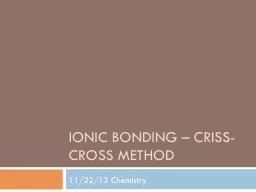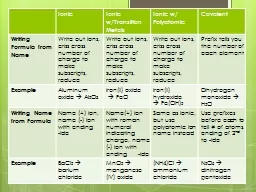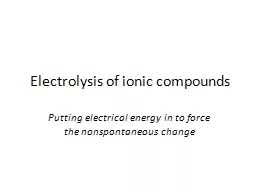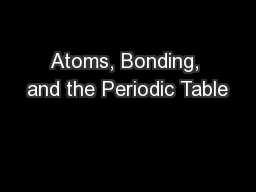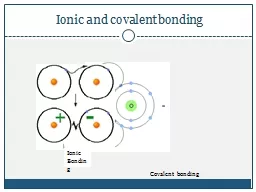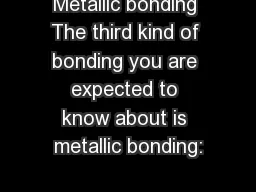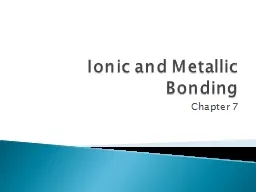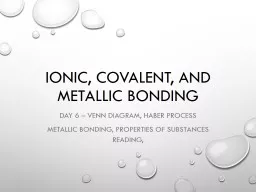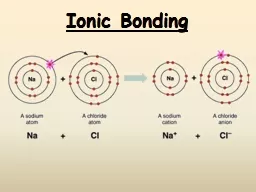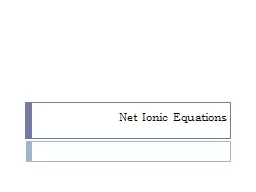PPT-Ionic Bonding –
Author : sherrill-nordquist | Published Date : 2015-11-16
Criss Cross Method 112213 Chemistry Drill Draw electron dot structures for each element What charge do they typically have H Ca Ne Zn take a guess on the charge
Presentation Embed Code
Download Presentation
Download Presentation The PPT/PDF document "Ionic Bonding –" is the property of its rightful owner. Permission is granted to download and print the materials on this website for personal, non-commercial use only, and to display it on your personal computer provided you do not modify the materials and that you retain all copyright notices contained in the materials. By downloading content from our website, you accept the terms of this agreement.
Ionic Bonding –: Transcript
Download Rules Of Document
"Ionic Bonding –"The content belongs to its owner. You may download and print it for personal use, without modification, and keep all copyright notices. By downloading, you agree to these terms.
Related Documents

